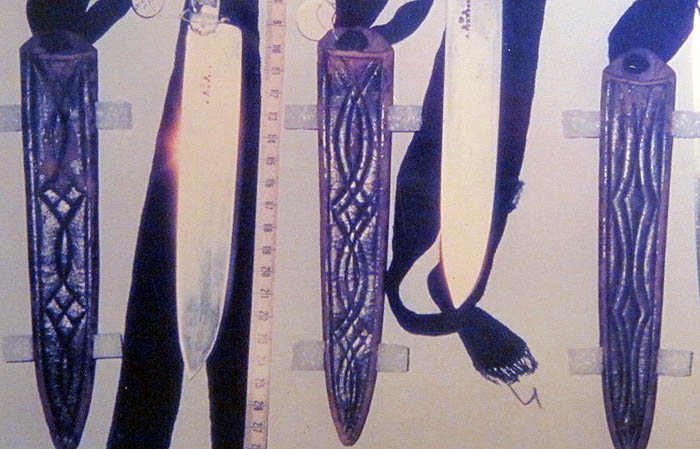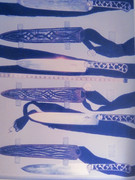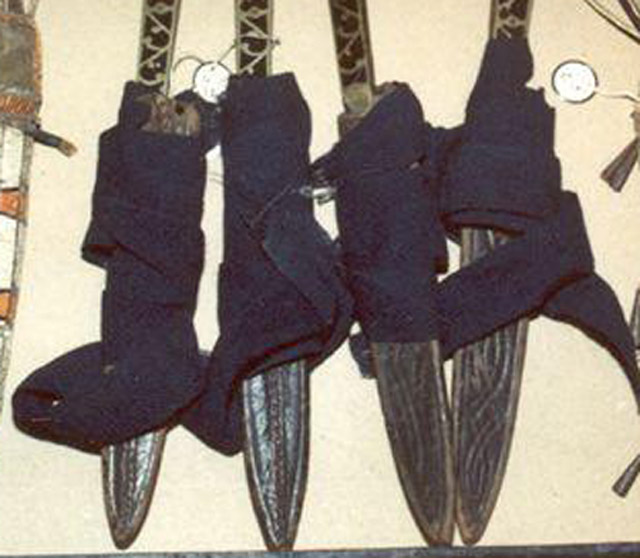- Joined
- Aug 25, 2003
- Messages
- 6,387
- Reaction score
- 1,251
That would go well with late 19th c., or 20th c.





Tie the sash tight, stick the sheath in with the stud facing out, and it catches on the top of the sash.Is that sash tied around the neck or waist? Interesting in that it can serve two purposes at once...belt and knife attachment.
What stud?Tie the sash tight, stick the sheath in with the stud facing out, and it catches on the top of the sash.
One source I have found says that they evolved from medieval times, and were popular until the end of the 19th c. Another dates them at 1760's, to 1850's. Yet another dates them as 17th c, and 18th c. I would say PC for 18th c. reenacting. Repros are available from Crazy Crow, Amazon, and a few others. However, as best I can tell, these repros may be heavier/thicker built than the originals, and for around only $40.00, may be of questionable quality.Is that sash tied around the neck or waist? Interesting in that it can serve two purposes at once...belt and knife attachment.
Any idea on time period for those? Are they period? They look aweful new...
Tie the sash tight, stick the sheath in with the stud facing out, and it catches on the top of the sash.
Tie the sash tight, stick the sheath in with the stud facing out, and it catches on the top of the sash.
Enter your email address to join: